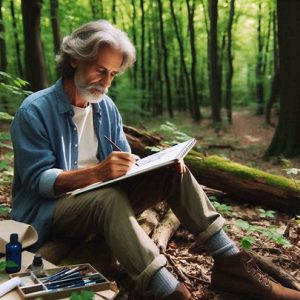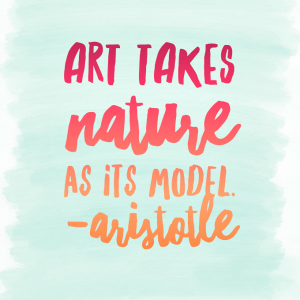 Studies show that mental clarity can boost creative performance by freeing up cognitive resources. When your mind isn’t busy juggling a storm of thoughts, it’s easier to observe, imagine, and create without second-guessing. For artists working with themes pulled from nature, like eco-art or forest landscapes, a quiet mind helps capture the subtle beauty often missed in daily life’s noise.
Studies show that mental clarity can boost creative performance by freeing up cognitive resources. When your mind isn’t busy juggling a storm of thoughts, it’s easier to observe, imagine, and create without second-guessing. For artists working with themes pulled from nature, like eco-art or forest landscapes, a quiet mind helps capture the subtle beauty often missed in daily life’s noise.
Reducing overthinking can transform the way artists connect with their work. Techniques taught by organizations like Rosalie van Gils show how structured mental exercises can quiet mental clutter. By doing so, artists gain space to respond intuitively to natural elements — the way light hits a leaf, the rhythm of waves, or the harmony of earthy colors. Mental stillness invites deeper observation and interpretation. That alone can elevate any piece of art, especially those inspired by the living world.
The Link Between Calmness and Artistic Flow
Creative flow happens when you’re completely immersed in your process — no stress, no distractions. It’s like being carried by a current of ideas, where time fades and only creation matters. But getting into that state isn’t always easy. Overthinking, doubt, or mental fatigue can block access to this flow state.
Artists who work with natural inspiration often benefit from techniques that reset their mental space. Nature is already full of patterns, energy, and inspiration. What many need is the ability to receive that input clearly. Simple breathing exercises, digital detox sessions, or even mindful walks can help remove mental fog. When the mind is clear, it acts like an open lens. Every movement, texture, and sound from nature becomes a creative prompt instead of background noise.
Eco-Art Demands Emotional and Mental Presence
Nature-inspired art doesn’t just mimic the outside world — it interprets it. Artists often aim to show the relationship between humans and nature, raise awareness, or even advocate for sustainability. These messages require a sense of emotional presence. And that presence comes more easily when you’re not stuck in loops of analysis or self-doubt.
Being mentally present allows artists to engage deeply with their environment. A clear mind doesn’t try to control or over-process what’s happening around it. Instead, it listens. It sees. It responds. That natural responsiveness often leads to breakthroughs — a sudden new idea for a sculpture, a shift in color palette, or the courage to try something unconventional.
Methods That Support Creative Clarity
So how can artists reach that state of clarity and flow? It starts with intention. Setting aside time each day for mental stillness helps retrain the brain to slow down. Here are a few simple yet powerful practices:
Mindful Sketching
Instead of planning out a drawing, let your hand move freely while observing nature. This meditative approach reduces self-judgment and keeps you rooted in the present moment.
Nature Journaling
Writing down what you see, feel, and hear outdoors can help you tune into details. It’s also a way to offload mental noise before getting into the studio.
Breathing Techniques
Box breathing or deep belly breathing can lower stress levels and reset focus. Just five minutes before starting your art session can make a difference in how you approach your work.
Digital Boundaries
Constant screen use is known to fragment attention. By limiting screen time and notifications, artists protect their headspace and maintain stronger creative focus.
Nature as a Healing Space for the Mind
There’s a reason many artists seek inspiration outdoors. Nature isn’t just beautiful — it’s healing. Studies show that time in green spaces lowers anxiety, reduces cortisol, and improves mood. When your environment supports peace, your creativity flows more naturally. This is the healing power of art. That’s why clearing mental clutter is especially important when creating nature-inspired art. The goal is not to interpret nature with a busy mind, but to let it speak through you.
The Big Picture
Clarity isn’t just about peace. It’s also about power. When artists tap into a still, focused mental space, they open the door to fresh insights, bold expression, and emotional connection. Nature-inspired creativity is richer and more impactful when it’s born from a calm, receptive state. With gentle guidance and daily practice, any artist can begin to create from this space, where nature, mind, and imagination meet.
Conclusion
The next time you find yourself stuck or overwhelmed, pause. Step outside. Breathe. Allow yourself to observe without expectation. Let nature teach you how to slow down. With a clear mind, your creativity won’t just return — it will deepen. And the art you create will carry that stillness forward into the world.




